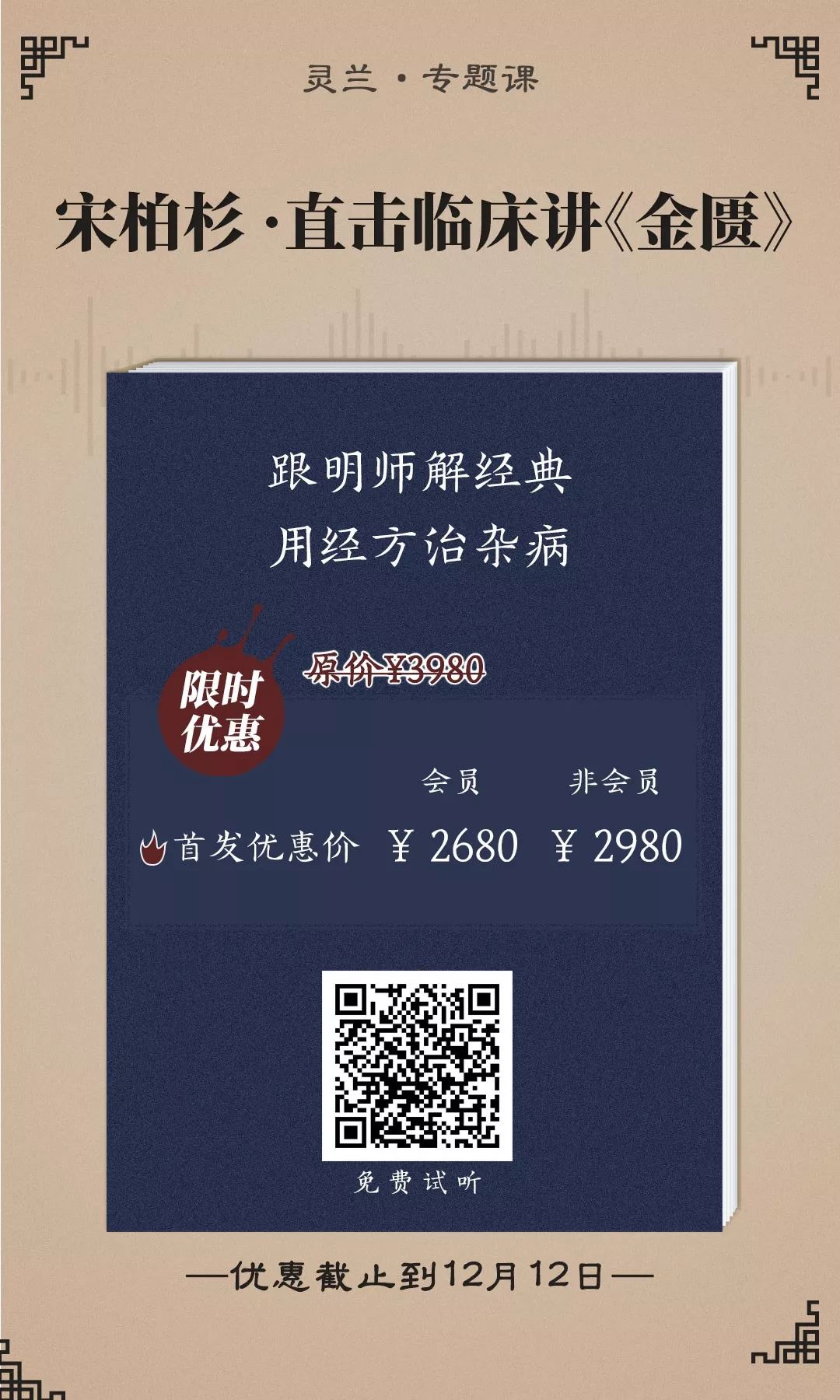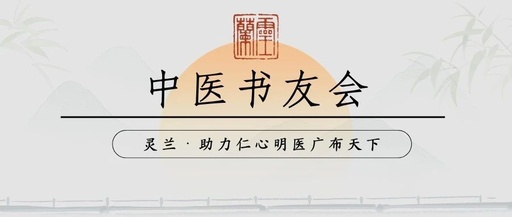
TCM Book Club Issue 2239
Daily updates to accompany the growth of TCM practitioners
IIntroduction:Wu Kun in “Medical Formulas Examination”: “When blood is abundant, the body feels cool; when blood is deficient, the body feels hot. If one is exhausted from hunger and labor, the yin blood becomes deficient, leading to an excess of yang, resulting in symptoms such as hot skin, red eyes, flushed face, and thirst. This condition resembles the symptoms treated by Bai Hu Tang (White Tiger Decoction), but the pulse is large and weak, not strong and long, which is a key distinction. The “Nei Jing” states that a weak pulse indicates blood deficiency. Dang Gui (Angelica Sinensis) is rich in flavor and nourishes the blood, while Huang Qi (Astragalus) is sweet and tonifies qi. Currently, the amount of Huang Qi is several times that of Dang Gui in blood tonifying formulas, indicating that the tangible blood cannot generate itself but is produced by the intangible qi. The “Nei Jing” states: ‘Yang generates Yin’, which is the essence of this principle.” (Editor/Tang Yichao)

Dang Gui Bu Xue Tang (Dang Gui Blood Nourishing Decoction)
Author/Men Chunde
【Ingredients】Huang Qi (Astragalus) 30g, Dang Gui (Angelica Sinensis) 6g【Preparation】Decoct in water for oral administration.【Indications】Fatigue and internal injury.Symptoms include hot skin, flushed face, thirst, a large and weak pulse, and in women, blood deficiency with fever during menstruation or postpartum, headaches, or non-healing sores.【Formula Interpretation】Fatigue leads to internal injury, resulting in weak qi and blood deficiency.Weak qi causes the body to feel cold, while blood deficiency causes the body to feel hot. The deficiency of yin blood allows the floating yang to escape, leading to symptoms of hot skin and thirst, similar to Bai Hu Tang syndrome, but the pathogenesis is entirely different; Bai Hu Tang syndrome is characterized by excess heat due to yang. The pulse is large and strong in Bai Hu Tang syndrome, while in this case, the pulse is large and weak, thus the formula is used to tonify qi and generate blood, using intangible qi to promote the generation of tangible blood.The formula emphasizes Huang Qi to greatly tonify the qi of the spleen and lungs, thus nourishing the source of blood; Dang Gui nourishes the blood and harmonizes the nutrients, allowing yang to generate yin and qi to promote blood production.【Clinical Applications】1. Insufficient Milk Production in Nursing WomenThis is often caused by the loss of qi and blood postpartum, leading to deficiency in the Chong and Ren channels.It can be used with increased dosage of Dang Gui Bu Xue Tang, i.e., Huang Qi 60g, Dang Gui 30g, adding Bai Zhi (Angelica Dahurica) 6g and Tong Cao (Tetrapanax) 9g, decocted in water for oral administration, yielding good results.2. Surgical Sores and UlcersDang Gui Bu Xue Tang is also known for its ability to tonify qi, expel toxins, nourish blood, and promote muscle regeneration.For many years, I have added Jin Hua (Lonicera) 30g and Gan Cao (Licorice) 9g to this formula, naming it the “Surgical Baoyuan Decoction” to treat various sores and ulcers, with remarkable efficacy.1. OsteomyelitisExample:Gu, male, 13 years old.The patient had a 3cm×7cm ulcer on the left tibia with exposed muscle, the ulcer was pale red, moist, and often oozing pus and blood, sometimes accompanied by rice soup-like substances. After seeking treatment from various sources, it had not healed for a long time.Diagnosed as thin body, pale complexion, low fever, thirst, and a large and weak pulse.Treated with my self-formulated Surgical Baoyuan Decoction.Prescription:Huang Qi 30g, Dang Gui 15g, Jin Hua 20g, Gan Cao 9g, decocted in water for oral administration, for over ten doses.After half a month, the ulcer became itchy, new flesh grew, and the wound shrank. Subsequently, I continued with my self-formulated Surgical Baoyuan Decoction and my self-formulated Gui Jiao Tian Ling Wan, with the following prescriptions:First prescription:Huang Qi 30g, Dang Gui 15g, Jin Hua 15g, Gan Cao 9g, decocted in water, taken before meals.Second prescription:Dang Gui 120g, Lu Jiao Jiao (Deer Antler Glue) 30g, Tian Ling (Calcined) 30g, Chuan Xiong (Ligusticum) 20g, Lizard (Roasted) 2 pieces, Shu Fu (Dried) 50 pieces, Shu Di Huang (Rehmannia) 120g, Chuan Bei Mu (Fritillaria) 50g, Rou Gui (Cinnamon) 10g, Yuan Shen (Ophiopogon) 120g, Mu Li (Oyster Shell) 60g, ground into a fine powder and mixed with 500g of Xia Ku Cao (Selfheal) decoction, strained, concentrated, and mixed with honey to form pills, taken daily 12g.These two prescriptions were taken every other day for a total of four months, and the ulcer healed.2. Thromboangiitis ObliteransExample:Li, male, 51 years old.He had thromboangiitis for five years.The left little toe and dorsum of the foot had been ulcerated for over two months, with slight local heat, dark red ulcers, thin pus, and persistent pain, accompanied by weight loss, spontaneous sweating, lethargy, slightly flushed face, and a weak pulse.This was a case of deficiency of the righteous qi with invasion of pathogenic factors, treated with my self-formulated Surgical Baoyuan Decoction to tonify the righteous qi and expel pathogens.Prescription:Huang Qi 40g, Dang Gui 20g, Jin Hua 15g, Gan Cao 12g, decocted in water for ten doses.After taking the medicine, the pain decreased, spontaneous sweating stopped, and after alternating with the above formula and Yang He Tang (Yang Harmony Decoction) for half a month, new flesh grew at the ulcer site, and the skin healed.3. Measles in ChildrenIn cases of deficiency of righteous qi and difficulty in expelling the measles rash, with cyanotic lips and pale face, using my self-formulated Surgical Baoyuan Decoction in moderation for internal support and external clearing, the therapeutic effect is very quick.4. Lung Abscess Recovery PhaseExample:Liu, male, 31 years old, farmer.A month ago, he suffered from a lung abscess, and after treatment with both TCM and Western medicine, various symptoms improved.However, he still experienced cough, shortness of breath, spontaneous sweating, excessive phlegm, body heat, and thirst, with a large and weak pulse.I continued with my self-formulated Surgical Baoyuan Decoction, adding Chuan Bei Mu 9g, Yuan Shen 12g, Mu Li 15g, Xia Ku Cao 15g, and Yu Xing Cao (Houttuynia) 15g, for a total of over 30 doses, and the symptoms gradually disappeared.5. Yin Abscess (Tuberculous Empyema)Example:Zhang, female, 9 years old, visited on July 10, 1971. The child had suffered from pulmonary tuberculosis since the age of five and had not fully recovered despite treatment.In 1970, a mass was found on the right chest wall, which ruptured and oozed pus after several months. After examination at a municipal hospital, she was diagnosed with tuberculous empyema, and the dosage of anti-tuberculosis medication was increased, and a drainage tube was placed. After seven months of hospitalization, the pus continued to drain, and she was discharged for further treatment.The child was thin, pale, lethargic, weighed only 37 pounds, had rapid breathing, dry cough, and the drainage tube was constantly oozing pus, with thin pus, afternoon low fever, a weak and rapid pulse, and a red, dry tongue.This was a case of Yin abscess, with deficiency of qi and blood, and it was inappropriate to hastily clear and resolve, so the focus was on nourishing and expelling pus.Proposed prescriptions:First prescription:Chai Hu (Bupleurum) 12g, Dang Gui 15g, Bai Shao (White Peony) 12g, Bai Zhu 9g, Fu Ling (Poria) 12g, Xia Ku Cao 15g, Chuan Bei Mu 9g, calcined Mu Li 15g, Yuan Shen 15g, powdered Dan Pi (Moutan) 9g, Gan Cao 6g, decocted in water for oral administration.Second prescription:Huang Qi 30g, Dang Gui 15g, Jin Hua 30g, Gan Cao 9g, decocted in water for oral administration.Third prescription:Dang Shen (Codonopsis) 12g, Bai Zhu 9g, Fu Ling 12g, Dang Gui 15g, roasted Gan Cao 6g, raw Bai Shao 12g, Shu Di Huang 12g, Mai Dong (Ophiopogon) 12g, Huang Qi 15g, Yuan Zhi (Polygala) 6g, Wu Wei Zi (Schisandra) 6g, fresh ginger 3 slices, red dates 4 pieces, decocted in water for oral administration.The above prescriptions were taken in succession for a total of 21 doses, and the pus volume decreased, and appetite increased.On August 7, during the second visit, the previous two prescriptions were continued, and seven more rounds were taken.On September 1, during the third visit:The area around the ulcer became itchy, and other symptoms significantly reduced. The drainage tube contained only a small amount of mucus, and I advised her to go to the hospital to remove the drainage tube, and switched to using the Surgical Baoyuan Decoction and Yang He Tang for treatment.After taking the above medicine for 30 doses, the ulcer gradually healed, the child’s spirit improved, appetite increased, and weight increased by 8.5 kg. Continued medication for conditioning.By the end of 1971, the child was re-examined, and the tuberculous empyema had healed, and she returned to school the following year.I have treated many surgical conditions and believe that abscesses and ulcers have two paths, one light and one heavy, with toxins and pathogens varying in depth. TCM internal treatment has shown remarkable efficacy.Abscesses should be cleared, while ulcers should be warmed and tonified; they must not be confused.Additionally, if the pus is thin, it indicates qi and blood deficiency; if the pus is thick, it indicates abundant qi and blood. One cannot simply apply the method of clearing heat and expelling toxins, especially with warming and tonifying qi and blood, internal support and external clearing, and the method of opening the pores to expel toxins. Clinical differentiation and application should be precise for effective healing.
Recommended Reading:
It turns out that Dang Gui Bu Xue Tang can treat so many diseases
To treat gastric ptosis, without kidney yang, the central qi cannot be established
|
I Copyright Statement
I Submission Email [email protected] |
Song Baishan’s Clinical Insights on “Jin Gui” is here!!
25 original texts analyzed sentence by sentence, 40 diseases analyzed one by one, over 200 formulas applied one by one, and Zhang Zhongjing’s pulse diagnosis explained to you.
Over the course of a year, we plan to exceed 100 lectures, with weekly updates, covering everything from daily life to clinical practice, from thinking to methods. We will do our utmost to assist you in understanding Jin Gui and applying it clinically! Currently, nearly 800 people have joined the learning program. Click here for course details


This course is valid for a long time once subscribed, learn anytime, anywhere!

Click to read the original text and watch more free content on “Song Baishan’s Clinical Insights on Jin Gui”

